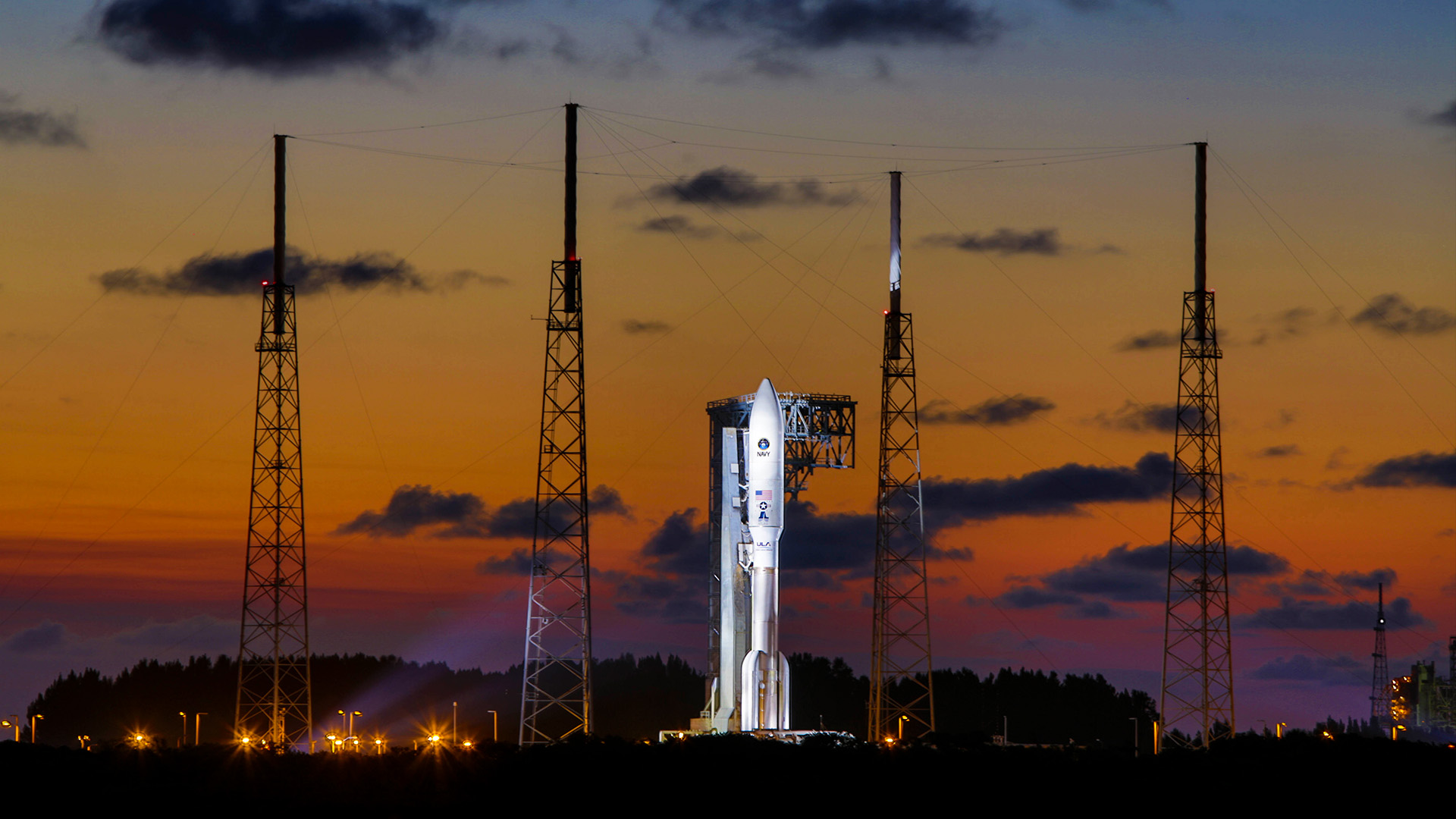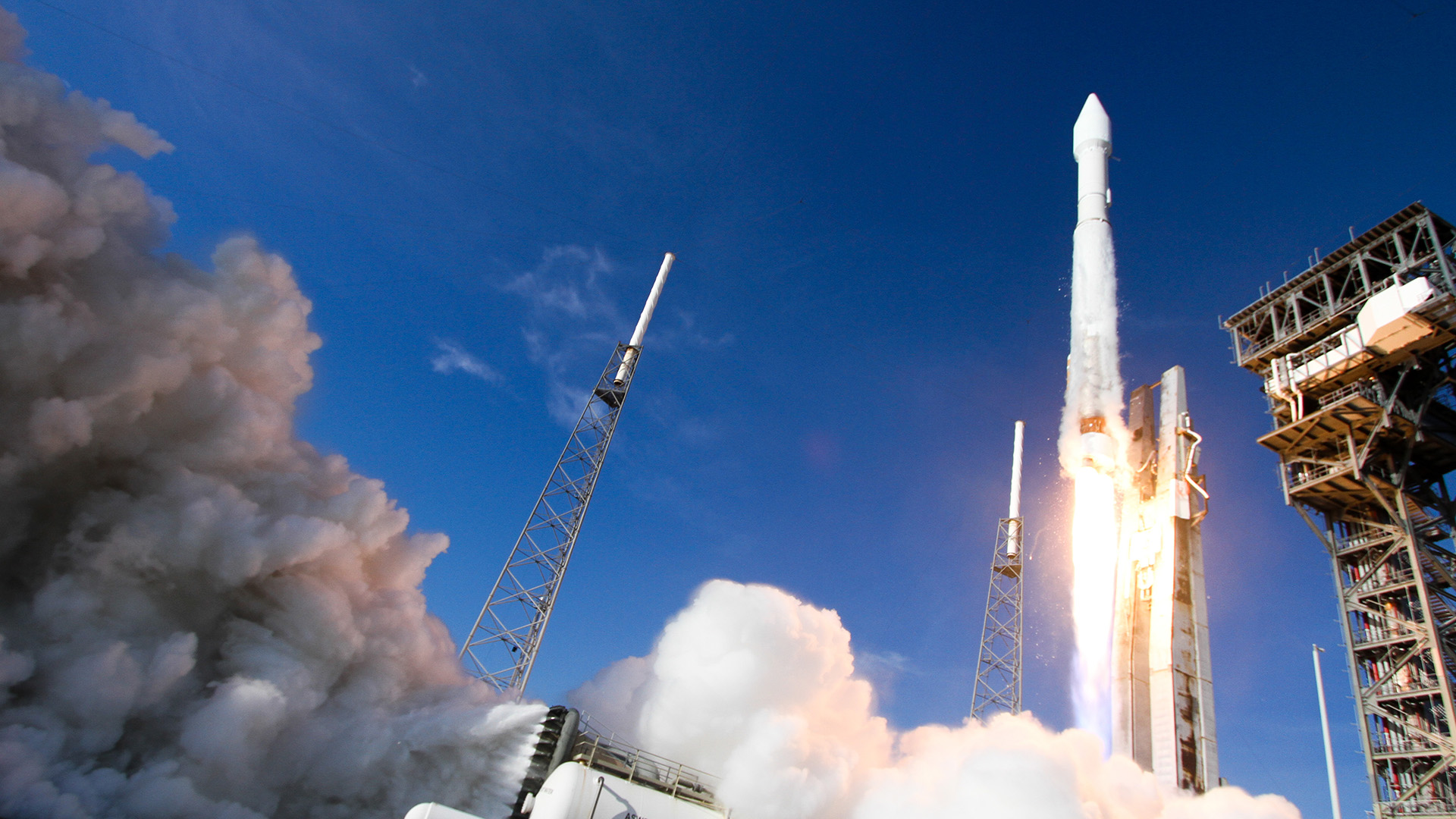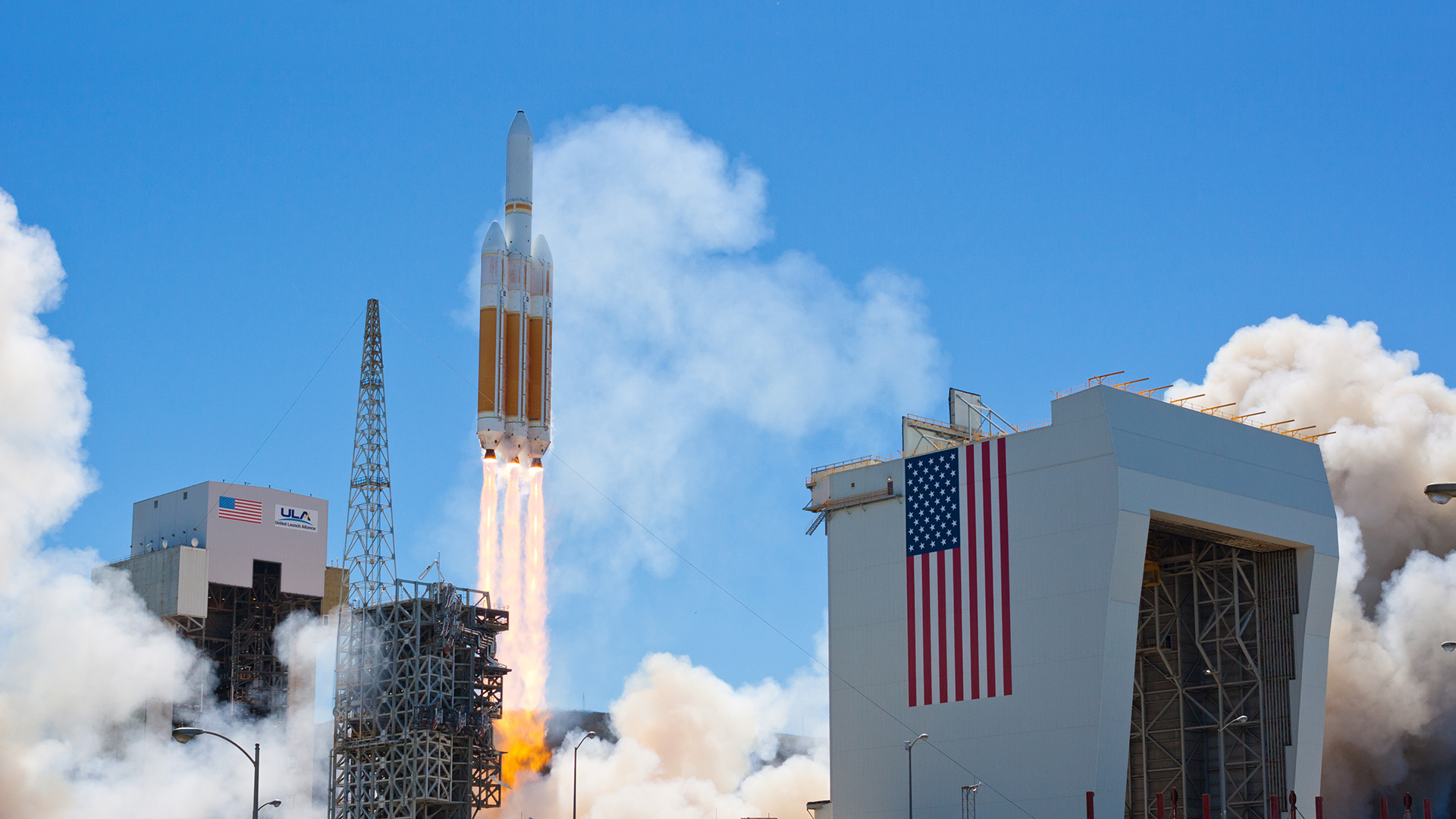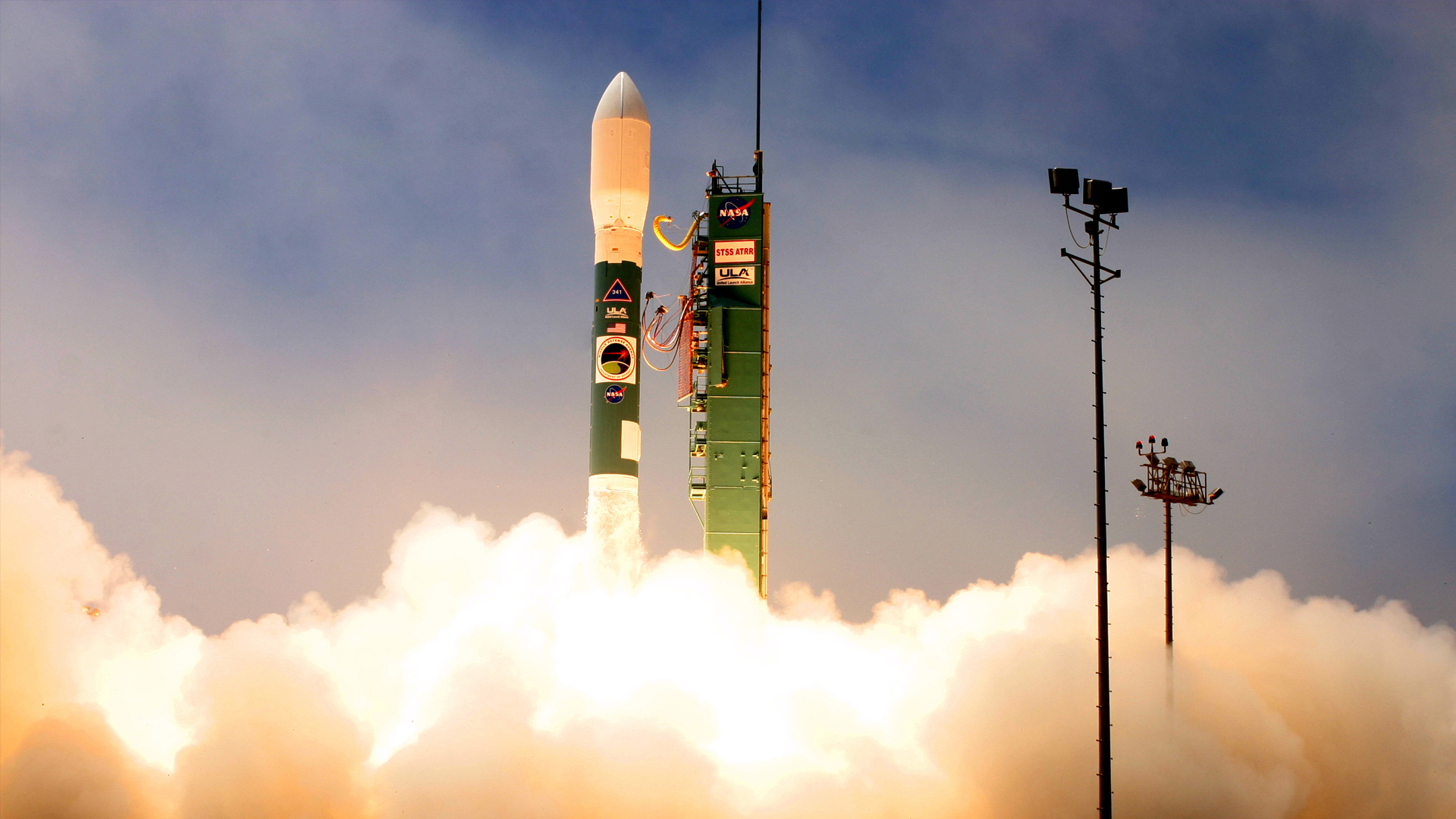Missions
Next LaunchUnited Launch Alliance Atlas V Rocket, with 200th Centaur, Successfully Launches Mobile User Objective System-1 Mission
Atlas V MUOS-1 Mission Booklet
United Launch Alliance Atlas V Rocket, with 200th Centaur, Successfully Launches Mobile User Objective System-1 Mission
Cape Canaveral Air Force Station, Fla., (Feb. 24, 2012) — A United Launch Alliance Atlas V rocket carrying the Mobile User Objective System-1 (MUOS-1) for the United States Navy lifted off from Space Launch Complex-41 here at 5:15 p.m. EST today. This was ULA’s 2nd launch of an aggressive 11 mission schedule for the year and at nearly 15,000 pounds, MUOS-1 marks the heaviest satellite launched to date by an Atlas launch vehicle.
"ULA is honored to serve with our mission partners in the preparation and launch of this important mission for the U.S. Navy and for our U.S. Air Force customer,” said Jim Sponnick, ULA vice president, Mission Operations. “This integrated team is singularly focused on ensuring that these critical MUOS satellites are safely delivered, providing vital communications capability to the women and men protecting our freedom around the world.”
Sen. John Glenn, who attended the first launch attempt for MUOS-1 at ULA’s Atlas Spaceflight Operations Center, reflected on his flight aboard an Atlas vehicle in 1962.
"The program has come a long way since 50 years ago when I launched on an Atlas launch vehicle," said Glenn. "I'm just glad the latest version is still doing such important work for our nation."
This mission was launched aboard an Atlas V Evolved Expendable Launch Vehicle (EELV) 551 configuration vehicle, which includes a 5.4-meter diameter RUAG Space payload fairing along with five Aerojet solid rocket motors attached to the Atlas booster. The Atlas booster for this mission was powered by the RD AMROSS RD-180 engine and the Centaur upper stage was powered by a single Pratt & Whitney Rocketdyne RL10A engine.
“The 200th flight of the Centaur is a very big milestone for the ULA team, as Centaur has been pioneering space launch for the last 50 years,” said Sponnick. “It took 33 years for Centaur to accomplish those first 100 flights. The next 100 Centaur launches have been accomplished in just 17 years.”
The first Centaur launches in the early 1960’s demonstrated the extremely high performance that can be achieved with a liquid hydrogen/liquid oxygen rocket stage. The technologies developed and verified were subsequently used for the Saturn I, Saturn V, Space Shuttle, Titan, and Delta programs.
MUOS is a next-generation narrowband tactical satellite communications system designed to significantly improve ground communications for U.S. forces on the move. MUOS will provide military users 10 times more communications capability over existing systems, including simultaneous voice, video and data, leveraging 3G mobile communications technology.
Developed by the United States Air Force to assure access to space for Department of Defense and other government payloads, the EELV Program supports the full range of government mission requirements, while delivering on schedule and providing significant cost savings over the heritage launch systems.
ULA's next launch is the Delta IV NROL-25 mission for the National Reconnaissance Office scheduled in March 29 from Space Launch Complex-6 at Vandenberg Air Force Base, Calif.
ULA program management, engineering, test, and mission support functions are headquartered in Denver, Colo. Manufacturing, assembly and integration operations are located at Decatur, Ala., and Harlingen, Texas. Launch operations are located at Cape Canaveral AFS, Fla., and Vandenberg AFB, Calif.





